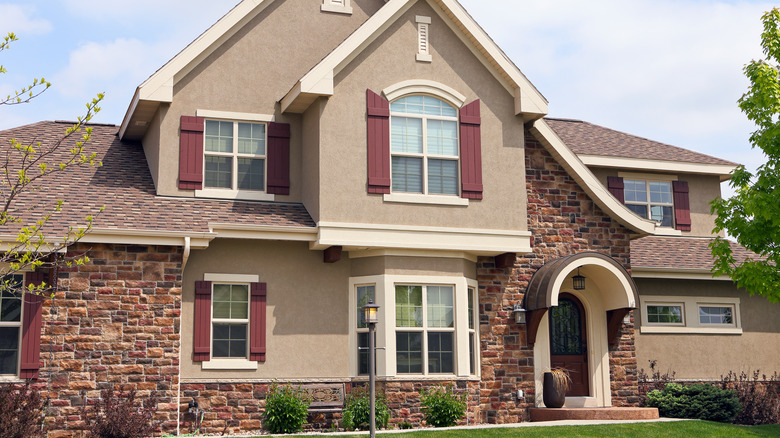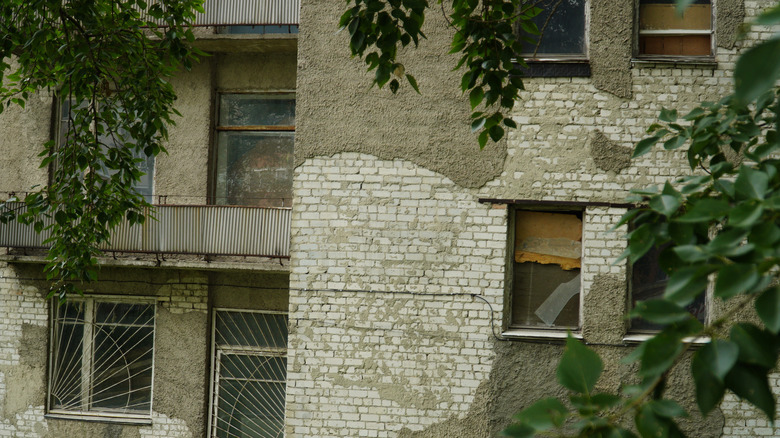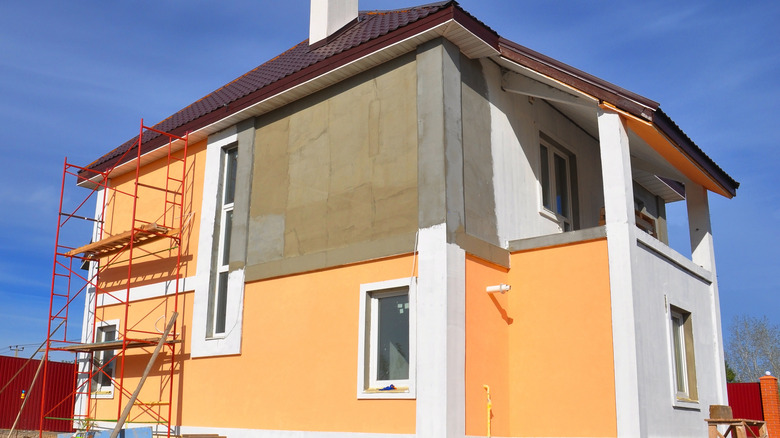What You Should Know About Moisture Damage Before Buying A Stucco Home
Let's face it, a home exterior clad with stucco siding is undoubtedly beautiful. However, the benefits of this particular material extend beyond just looks. Stucco is well-loved for its durability, nice texture, and ability to hide flaws, not to mention its superior natural thermal regulation capacity, per RenovationFind. Because of these reasons, this particular building material has received a lot of attention, and many homeowners are interested. In fact, according to the Census Bureau's Survey of Construction, stucco siding was the most popular material for all the single-family homes built in 2021, via the National Association of Home Builders.
While this might seem enticing at first glance, don't be so quick to buy a stucco home just yet. There is no refuting that this building material has its fair share of advantages, but its main problem is moisture damage. That said, should you shy away from buying stucco homes? Take a look at some things you need to know about stucco homes as far as moisture damage is concerned.
Moisture problem in stucco sidings
Although moisture can be a problem for any home, those built with stucco siding are particularly susceptible to water damage. This is because regulation hasn't been the best in the building phase. APCO mentions that the moisture problem stems from the improper installation of a flush fin, a metal meant to keep water away from the significant joints of the house structure. Just like any other home, moisture damage provides the right breeding ground for the growth of mold and mildew that pose health risks.
Other than that, water damage to the stucco siding can also cause cracking around the windows and door frames. The good news is that identifying the problem early enough will facilitate timely remediation, preventing any more damage to the walls and the house structure. Some of the most common signs of water damage include discoloration, flaking, and a stuffy mildew smell. Distinctive Homes notes that sometimes, moisture damage might not manifest physically until the problem has escalated. For this reason, it is recommended to do a moisture test beforehand.
Repair or remediation
Depending on the damage's extent, you can either do a repair or a full remediation. Stucco repair is ideal for fixing a few patches on the wall, especially when the moisture damage is limited. On the other hand, full remediation involves a comprehensive approach to the repair where the root of the problem is dealt with first. Because of the scope of work involved, remediation is often more expensive, ranging from $6,000 to $9,000 for a 1000-square-foot completed work, per Morgan Exteriors. Another point worth mentioning is that homeowner's insurance might finance the repair based on specific circumstances.
According to MHX Designs, insurance companies might not cover the remediation costs if the problem was discovered before seeking the policy. Another reason that might disqualify a particular home from the homeowner's insurance financing is if an unlicensed individual did the work. Before signing your name on the contract, conduct a water damage inspection if the house has stucco. You don't want to buy a home with moisture damage that requires expensive repairs, especially since the homeowner's insurance coverage is not guaranteed.


